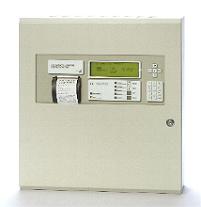Building owners must test their emergency lighting systems regularly to maintain them in proper working order. Such testing means that 'responsible people' can prove that they have carried out their duty of care. ICEL - the emergency lighting arm of the Lighting Industry Association (LIA) - says that automatic testing can be more cost-effective and reliable than manual testing, and provide peace of mind into the bargain:

Emergency lighting is required in all premises where people are employed and artificial lighting is installed, as it assists occupants in evacuating a building quickly in an emergency - such as a fire. Building landlords, occupiers and employers are obliged by law under the Regulatory Reform (Fire Safety) Order to carry out risk assessments to ensure that their premises are easy to escape from.
BS5266: Part 10 - the emergency lighting code of practice - and Fire Safety legislation under Section 7 (testing, maintenance and record keeping) mean that the 'responsible person' concerned must test emergency lighting systems regularly and record the results. He or she may be asked to prove, possibly in a court of law, that the required duty of care has been met.
Monthly and annual testing of every luminaire is necessary, with central battery system indicators being visually inspected daily. All self-contained emergency lighting must be functionally tested by switching on in the emergency mode each luminaire and each internally illuminated exit sign from its battery by simulation of a failure of the supply to the normal lighting for a period - sufficient to ensure that each lamp is illuminated. Accurate records must be kept. In large buildings, this can be a lengthy job that may be difficult to achieve whilst keeping the building in a legal, fully working state. Such testing, therefore, can be expensive and disruptive.
Automatic testing of emergency lighting:
Automatic testing can solve these problems cost-effectively by regularly checking, without human intervention, that emergency lighting batteries and luminaires are working correctly. Such 'self-test' systems automatically advise whether there is a fault that requires remedial action.
The case is strengthened by the importance given to the correct functioning and proper testing of emergency lighting under BS5266-Part 10:2008, which also promotes automatic test systems to BS EN 62034.
Test results still need to be recorded manually and entered into a logbook, but the person recording does not spend time carrying out the tests themselves, and need not be electrically qualified. Some systems avoid manual recording by connecting to a control panel for automatic data collection.
Automatic testing can save significant time and money, and the high responsibility required with conventional testing is reduced - providing peace of mind. Unfortunately, manual techniques do not necessarily ensure that testing is properly carried out. Correctly specified and installed automated testing does provide such reassurance without disrupting other electrical services, and also provides early notification of failures or performance degradation.
As well as providing confidence, therefore, automatic testing is often also more cost-effective than manual testing, despite the higher initial capital cost. The reduced testing device installation and labour costs compared with manual testing can provide real savings over time - even taking account routine lamp and battery replacement. Facilities managers can see even complex systems payback in two to four years.
For example, trapped key (test switch) interlocks are sometimes employed in emergency lighting systems for testing, for use only by authorised persons. However, if unauthorised persons use them, there is a danger that system batteries could go flat, with potentially dangerous consequences. It has been found in some cases that fitting trapped key systems is more expensive than providing automatic testing facilities.
So automatic emergency lighting testing is usually the better and safer option, providing that essential peace of mind for building owners and occupiers in the knowledge that they have carried out their 'duty of care'. Therefore, ICEL recommends that consideration should always be given to installing an automatic emergency lighting testing system conforming to BS EN 62034.
About BS5266:
BS5266 requires the following:
- A daily visual check on lamp operation in maintained luminaires.
- A daily check on indicators of central battery systems.
- All self-contained emergency lighting must be functionally tested typically for 5 -10 minutes at least every month.
- A full annual full discharge test.
- After three years is up - the annual test must be for the full duration.
- A logbook must be kept up to date with details of the emergency lighting system installed, together with all events and checks.
About automatic testing emergency lighting equipment:
The simplest 'self-test' emergency lighting systems are 'stand-alone' types not connected to any other device. Test results are typically shown by a single bi-colour LED on luminaires, but results still have to be entered manually into a logbook.
To avoid manual recording of test results, more comprehensive automatic test emergency lighting systems are available that connect to a control panel - typically using data cabling or wireless links - where the results are collected. More complex systems allow the programming of tests from the control panel, or from a PC on which visual representation of the installation can be displayed. This might include connected luminaires in test and those showing fault conditions.
Such advanced systems provide information about which luminaires are faulty and why. Layout plans of premises pin point graphically where all luminaires are located. For this reason, these systems are often invaluable to maintenance engineers who can respond effectively armed with replacement components.
Beyond PC-based emergency lighting test systems, fully featured systems that can be monitored and controlled via an intranet or Internet connection are also available, using proven technology. An automatic emergency lighting testing system should conform to BS EN 62034.
The picture shows Lx system emergency lighting products from Advanced Electronics, including a control panel that provides cost-effective automatic emergency lighting testing and monitoring.
